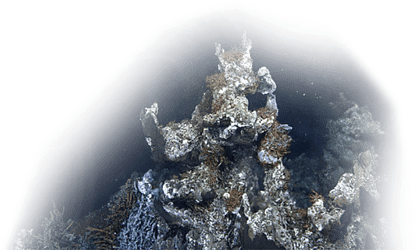During the night on 27 January 1700, a powerful magnitude 9 earthquake ruptured the Pacific coast along the Cascadia subduction fault zone. Historical records, as far away as Japan, confirm this devastating event.

Fast forward 316 years. Scientists now believe that major fault lines build up pressure over hundreds of years, and eventually release the pressure as a megathrust earthquake. Before that can happen, Ocean Networks Canada is poised to send an advance warning with sensors and software that can detect an earthquake—up to 90 seconds before the major shaking starts.
Earthquake early warning is a vital part of preparing for, and responding to, a major earthquake. It’s about delivering critical seconds of action that will save lives, reduce damage, support emergency response and kick-start recovery operations.
While Pacific nations such as Japan and Taiwan have fully integrated earthquake early warning systems, western North America is still in the building stages. An effective system requires collaboration among leaders and innovators in science, engineering and public safety—organizations such as Natural Resources Canada, British Columbia’s Ministry of Transportation and Infrastructure, Emergency Management BC, the University of British Columbia, the University of Victoria’s Ocean Networks Canada and many others.
This concentration of planning is mirrored south of the border where people and government agencies are equally wary of the locked plates of the Cascadia subduction zone, stretching from northern California to British Columbia.
A key piece in the puzzle: offshore sensors
Ocean Networks Canada operates observatory sites on the Cascadia subduction zone, with a number of seismic sensors sitting on the Juan de Fuca plate, on or close to the major fault line. This proximity allows for faster alerts that can provide coastal communities and urban centres with precious seconds to take action, before the major shaking starts.

More sensors, both on the seafloor and on land, would increase the areas monitored and provide a denser, more effective network, in line with the proven system that blankets Japan.
Directing disaster info into the right hands with WARN
ONC’s Web-enabled Awareness Research Network (WARN) software platform currently being tested, will deliver notification of impending earthquake shaking —almost immediately—that let emergency decision-makers and automatic safeguard systems take critical actions such as shutting down gas lines, pausing elevators, keeping firehall doors raised, halting surgery, stopping bridge traffic and slowing down trains.
Coordinating data from a number of sensors in different locations, WARN does not just detect events; it also makes measurements such as the severity and epicentre of an earthquake, or the speed and direction of a tsunami.
- WARN: providing rapid notifications to alert communities (Canada's Advanced Research and Innovation Network brochure)
Looking to the near future: collaborations are key
British Columbia will be testing its first full scale mock earthquake scenario and immediate response plan in June at Port Alberni, on Vancouver Island. ‘Exercise Coastal Response’ is a million-dollar exercise that will include all levels of government, Indigenous peoples, first responders and other specialists.
ONC also plans to install additional earthquake early warning sensors on land and offshore, during this summer’s Wiring the Abyss expedition.
“Effective earthquake early warning really is a shared responsibility. We’re all in this together: scientists, engineers and elected officials, plus every family and individual in British Columbia. We have the people and the expertise and the will. Let’s be ready for the big one.” Kate Moran, ONC President & CEO
Related stories:
Researchers look to improve earthquake warning system (Victoria Times Colonist, October 2016)
